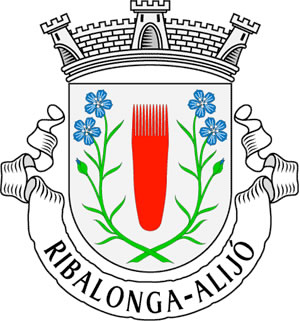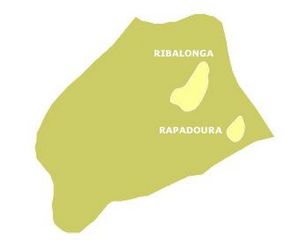Ribalonga facts for kids
Ribalonga is a small village, also called a 'parish,' located in the north of Portugal. Its name comes from old words meaning 'long climb.' It's found in a region known as 'Trás-dos-montes,' which means 'behind the hills.' In 2011, about 231 people lived there. The village covers an area of about 9 square kilometers. Ribalonga's special protector, or 'patron saint,' is Saint Anna. She is known as the mother of Saint Mary and the grandmother of Jesus.
Contents
A Look Back in Time: Ribalonga's History
The area where Ribalonga is located has a very long history. A fortress, known as the Castle of Ribalonga, likely stood here. People probably lived in this fortress as far back as the Iron Age. Life continued there even during the time of Ancient Rome.
Over the centuries, Ribalonga belonged to different larger areas. In the 1200s, it was part of the Vila Chã parish. Later, in 1839, it became part of Vila Real. By 1852, it belonged to Vilar de Maçada. Finally, in 1872, Ribalonga became part of the Municipality of Alijó.
Exciting Stories: Ribalonga's Legends
Ribalonga is a place full of interesting old stories. These tales have been passed down through generations. They help us understand the village's unique culture.
The Legend of the Red Cross
One famous story from Ribalonga is about the Red Cross. It tells of a man from the Sampaio family. His family's descendants still live in the village today. The legend says that in the year 2000, this man was returning from a market in Vilar de Maçada. He was carrying some meat with him.
Suddenly, a group of hungry wolves started following him. The man became very scared as the wolves got closer. When he was almost at the village, the wolves began to surround him. Feeling trapped, he got off his horse and knelt down. He prayed to the Lord of the Afflicted for help.
At that very moment, the dogs at Mr. Sampaio's house started barking loudly. The man's wife heard them and let them out. The dogs ran quickly to where the man was. They chased the wolves away, saving him. To show his thanks, the man built a cross where he had prayed for help. A few days later, one of the brave dogs appeared, but it was badly hurt.
Today, you can still see this cross. It is a bit old and worn, but it stands in a place called 'Red Cross.' This spot is located to the south of Ribalonga.
The Legend of Saint Anna
Another special legend in Ribalonga is about Saint Anna. It explains a unique rock found in the area. This rock is large and rectangular. It has three deep grooves on its top. These grooves look like the head, body, and limbs of a person.
Local people say that these marks were left by Saint Anna herself. The legend tells that Saint Anna was on a long journey to holy places. She became very tired and couldn't find anywhere comfortable to rest. So, she decided to lie down on this large rock.
The story says that the stone became soft for her. It molded to the shape of her body, making her feel comfortable and cozy. The next morning, at sunrise, Saint Anna felt strong again. She continued her journey.
After she left, people began to pass by the rock on their way to work. They noticed the strange grooves and were amazed. No one knows exactly how they figured out it was Saint Anna who left the marks. Perhaps it was because they admired her so much. What is certain is that Saint Anna is now the village's patron saint. The hills and land around this famous rock are known as 'Santa Ana.'
Natural Beauty: Ribalonga's Geography
Ribalonga is located in a beautiful natural setting. It shares borders with several other places. These include Rapadoura, Vila Verde, Popúlo, Vilar de Maçada, and Vila Chã. It also borders the famous Douro region.
The landscape around Ribalonga is very rugged and natural. It has many mountains and hills. You will also find lots of pine trees growing there. The area is quite stony, adding to its unique look.
Delicious Traditions: Ribalonga's Culture
The culture of Ribalonga is deeply connected to its food. The local cooking often features meat. There are many different delicious dishes to try. Some popular specialties include cozido à portuguesa, which is a traditional Portuguese stew. Another favorite is feijoada à transmontana, a hearty dish with rice and black beans. You can also find tasty local sausages like alheiras and linguiças.
Beyond its food, Ribalonga is also known for its agriculture. The village has many fields where crops are grown. There are also numerous vineyards. These vineyards produce grapes that are used to make wine, a very important part of the region's economy and culture.
Gallery
See also
 In Spanish: Pópulo e Ribalonga para niños
In Spanish: Pópulo e Ribalonga para niños
















